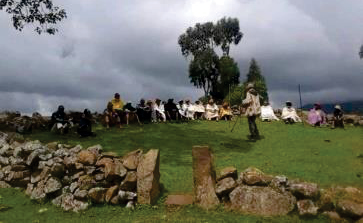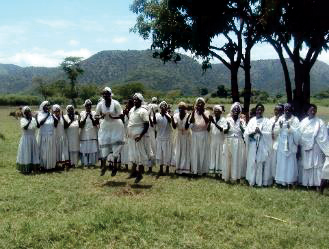About Gamo Zone
Three indigenous ethnic groups are living in Gamo Zone; they are Gamo, Gidicho, and Zayse. They have their distinct geographical location, language, cultures, and social identities living peacefully together with other ethnic groups of the country. Here are some details of the three ethnic groups.

The Gamo People
Besides a name for the Zone, the term “Gamo” is also a name for the ethnic group. The literal meaning of the word is ‘Lion’ which represents the braveness of the Gamo ethnic group. The Gamo’s are found to the west of Lakes Abaya and Chamo.
The Gamo massif is a compact formation, high, well-watered, and relatively rich, which contrasts with the aridity of the neighboring low lands. Their residential area is mostly known as “Gamo highland”.
The people speak a Gamotho language, which is a part of the wider Omotic language family. The Gamo highland is well known for its “Enset” or “false banana” production which is the main source of tap food. A tall hut that resembles a giant Elephant head whihcis made of bamboo trees is an eye-catching residential house in Gamo highlands. Gamo people are also well known for their artistic weaving knowledge which takes considerable part as an economic base.
Throughout the highlands, people live in different settlements which are organized into more than 40 different community units or “Deres”. “Dere” is a local community in Gamo ethnic that is governed by its own traditionally assigned leaders called “Kawo” and “Hallaqa”. Each “Dere” has its assembly places called “Dubbusha”. Dubbusha is a Public square where the Gamo elders address all issues and solve conflict cases.
“Dubbusha” also serves as a cultural meeting place, where the community and traditional leaders set rules and regulations, appoint local leaders, discuss social and cultural affairs and transfer indigenous knowledge for new generations. Generally, “Dubusha” is a core cultural institution for Gamo’s.

The Zayse People
The Zayse ethnic groups that have descended from “Kole” and others neighboring ethnic groups together with pre-existing indigenous people have formed their own Zayse identity. The Zayse ethnic group resides in three kebeles near Arbaminch town. They are Elgo, Wozaqa, and Dambile.
The language of the Zayese people is called “Zaysete” or “Zayesegna”. It is grouped into the Eastern group of the North Omotic language family.
The Zayse people livelihood is based on farming, animal rearing, beekeeping, fishery, and banana plantation.
The Zayse people construct their local hut in a circular shape. It is built with indigenous trees, such as Juniper (Tsid), Milts Ferrugenlaa (Birbira), Olea Africana (Woyera), which are used for walls construction and Bamboo (Brundaila) for roofing. To build a big house about 12 pillars are needed. In a single pillar house, the pillar wood is stood up at the center. The house is partitioned into “Ugura” (kitchen) and “Loche” (living
room).

The Gidicho People
The Gidicho people are living on the islands in Lake Abaya and offshore lands in Alage, Worbe, Bafano, Qeme, Chinqale, Jigsa, Birbir Goro, Maqa, Qontola, Jabbe, Sibaye, and Damboye localities. They mainly speak a lowland East Cushitic language which is called Basio.
The islanders speak quite a range of languages besides Basio. They are good in Gamotho, Gats’ame, Wolaytetho, AfanOromo (Guji) and Amharic.
The Gidichos are engaged in multi-economic activities. Their main economic activities are animal husbandry, local boat transport, and crop production supported by handcraft (weaving), bee keeping and fishing.
The islanders use “Wolabo” for fishing and water transportation. “Wolabo” is the cultural boat that the Gidicho people make it by the lakeside “Bar bone” plants. Bar bones are simple woods that can float easily on water bodies. They use this boat for transportation and fishing activities. “Wolabo” carries 15-20 people at once. The assembling process takes 4 months with around 50 bar bones and wooden tunnel
